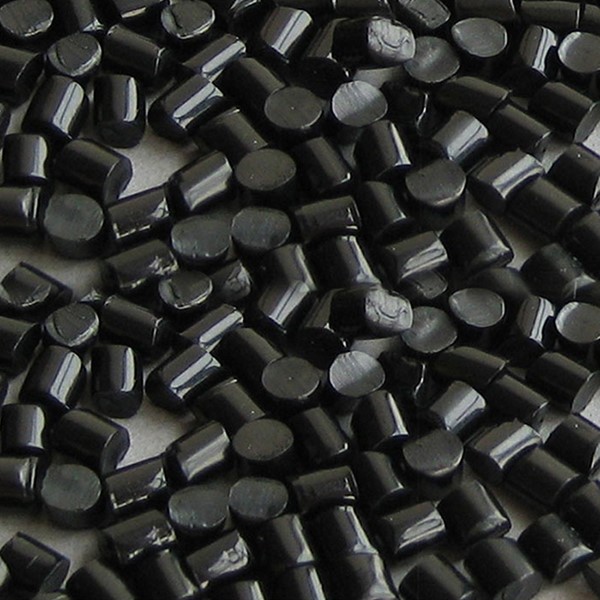APPLICATIONS OF BLACK MASTERBATCH IN PLASTIC GOODS
Black masterbatch is commonly used in industrial plastic products, such as pressing, extrusion, blow molding, drawing, pipes, granules and processing. For practical use, it takes vital part in injection molding of cars’ plastic parts, extruded plastic pipes, agricultural films and producing materials for geotextile.
Black masterbatch performs fundamental roles in pigmentation of plastic products. Black masterbatch plays two primary roles, including maintaining the chemical stability of the pigments and making the pigments far more even.

Firstly, the black masterbatch enables color circulation to be more even in goods. Adding black masterbatch to the manufacturing process causes the pigment to be refined, thereby improving the uniformity of color distribution. If the correct colored masterbatches and item types are selected, after being heated and melted, the colored particles will be proportionately dispersed into parts of the products.
Secondly, black masterbatch can effectively sustain the chemical stability of the pigments. In the process of storage and direct use, the pigment will inevitably come into contact with air. As a result, the water absorption and pigment oxidation will undoubtedly occur. If the goods is, however, manufactured with color masterbatch, there will be a resin component used as a base, and the pigments are also detached from the air. For this reason, the quality of pigments is accordingly ensured in the long term storage process.
What are the impacts of black masterbatch in plastic product applications? Black masterbatch has an impressive compatibility with plastic products, resulting in long-term stay in the products and exert its main use. However, if the black masterbatch exceeds the compatibility range, it will produce a negative impact on the plastic products. For example, when a large deal of filler is used, the system viscosity will increase, which simultaneously complicates the casting process and decreases the mechanical properties. In fact, when the amount of flame retardant is large, the mechanical properties of the material will be significantly reduced; the addition of a liquid auxiliary will reduce its heat resistance; most additives cause a partial or complete decrease of the transparent resin’s translucence.
In terms of the use of black masterbatch in plastic products, it is critical to notice that some additives have double or multiple effects. For instance, carbon black is regarded as coloring factor as well as light shielding and anti-oxidant. Plastics not only soften the product, but it can also reduce the additional temperature and enhance the fluidity upon melting. Furthermore, some also have the burning aid effects; Some metal soap stabilizers are lubricants. For these additives, the formulation should be put in scale together, whether mixed or simplified.

